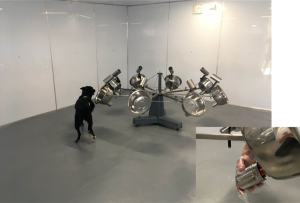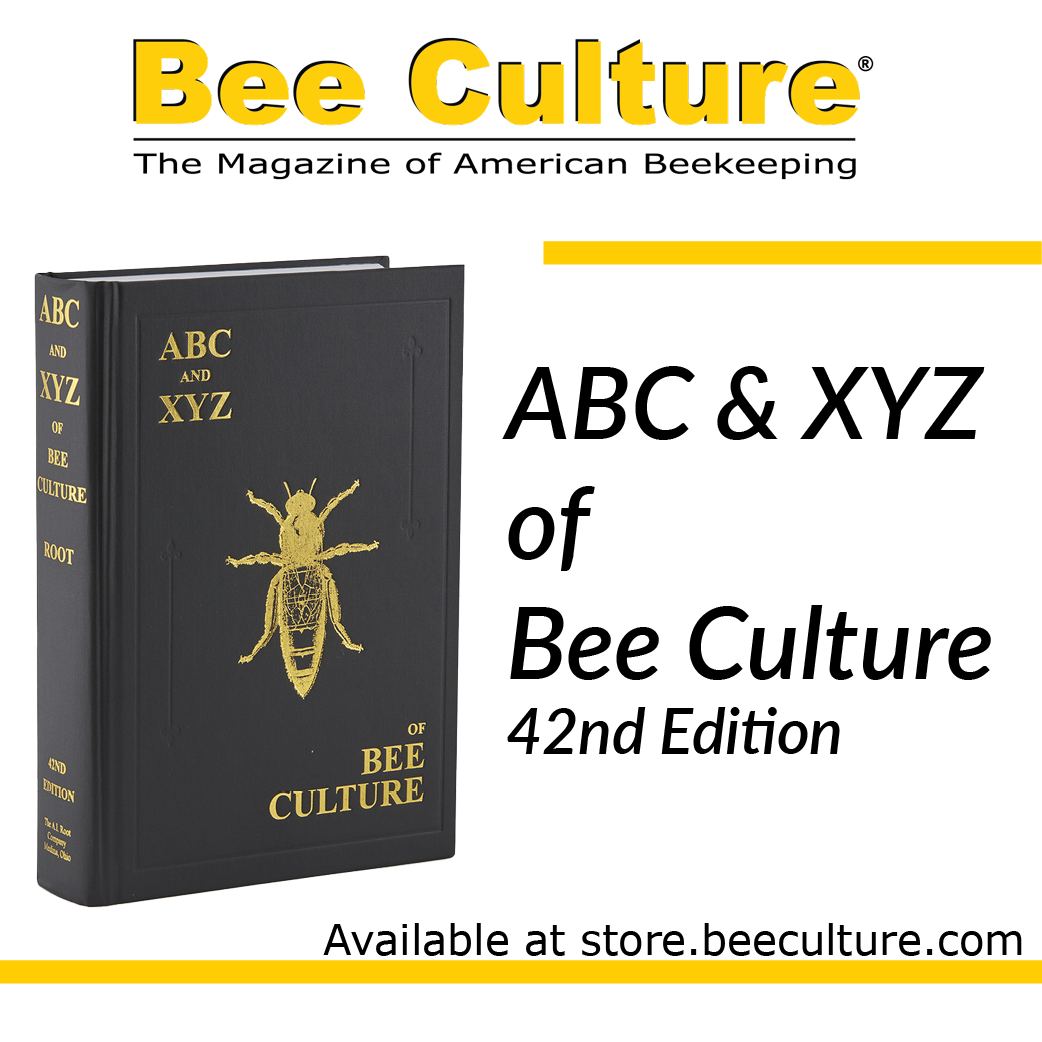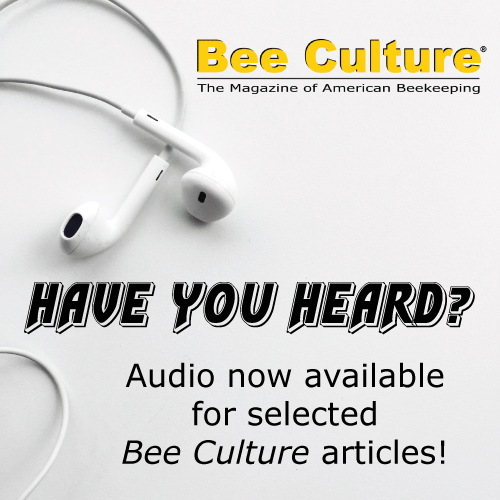Click Here if you listened. We’d love to know what you think. There is even a spot for feedback!
Read along below!
Found in Translation
Dog v. Machine: Identifying the Foul in Foulbrood
By: Jay Evans, USDA Beltsville Bee Lab
American foulbrood has been a consistent, if fortunately rare, curse of beekeepers for centuries. The bacterial agent behind AFB, Paenibacillus larvae, is widespread in managed colonies and yet only rarely triggers symptoms in the form of decayed and highly contagious infected brood. Catching those symptomatic cases early remains a critical goal of bee health management. Many U.S. states benefit from a cadre of bee inspectors who work with beekeepers to identify and act upon AFB infections (e.g., the Apiary Inspectors of America, https://apiaryinspectors.org/). Our own USDA Bee Disease Diagnostics Service, led by Samuel Abban (https://www.ars.usda.gov/northeast-area/beltsville-md-barc/beltsville-agricultural-research-center/bee-research-laboratory/docs/bee-disease-diagnosis-service/), works collaboratively with these inspectors and individual beekeepers to pounce on suspected AFB cases before their damaging shadow increases. While the visual and culturing tools for confirming AFB infections are robust, and that smell is hard to forget, there remains a huge need to rapidly screen apiaries for early signs of infection. The frontiers for this screening are marked by an unlikely pairing of furred partners and incredibly complex machines, and it is worthwhile to see which of these tools will be the most helpful for inspectors and beekeepers.
 Starting with the more charismatic tools, trained dogs are sporadically used to help inspectors pin down cases of AFB. The state of Maryland has two such trained dogs, led by Chief Apiary Inspector Cybil Preston (https://www.earthisland.org/journal/index.php/articles/entry/detective-dog-sniffs-out-devastating-honeybee-disease/). These companions certainly have the sensitivity to identify signals given off by diseased brood, but how accurate are dogs with the critical early-stage cases of AFB? A study by Neroli Thomson and colleagues in New Zealand aimed to push the limits of training and detection by dog detectives (Thomson, N.; Taylor, M.; Gifford, P.; Sainsbury, J.; Cross, S. (2023) Recognition of an Odour Pattern from Paenibacillus larvae Spore Samples by Trained Detection Dogs. Animals: 13, 154. https://doi.org/10.3390/ani13010154). Two out of three trained dogs did great, consistently and quickly responding to AFB cues placed in one spot within a twirling carousel of dog dishes (Figure). These dogs were trained using purified spores, so would presumably do great even with empty boxes containing post-AFB scale. Their sensitivity in the indoor arena was at the level of spores found in a fraction of a single infected bee. What needs to be tested is the ability of these dogs to ignore the many other smells coming from a beehive, not to mention the environmental distractions (from stinging bees to nervous beekeepers) they would experience when truly on the job.
Starting with the more charismatic tools, trained dogs are sporadically used to help inspectors pin down cases of AFB. The state of Maryland has two such trained dogs, led by Chief Apiary Inspector Cybil Preston (https://www.earthisland.org/journal/index.php/articles/entry/detective-dog-sniffs-out-devastating-honeybee-disease/). These companions certainly have the sensitivity to identify signals given off by diseased brood, but how accurate are dogs with the critical early-stage cases of AFB? A study by Neroli Thomson and colleagues in New Zealand aimed to push the limits of training and detection by dog detectives (Thomson, N.; Taylor, M.; Gifford, P.; Sainsbury, J.; Cross, S. (2023) Recognition of an Odour Pattern from Paenibacillus larvae Spore Samples by Trained Detection Dogs. Animals: 13, 154. https://doi.org/10.3390/ani13010154). Two out of three trained dogs did great, consistently and quickly responding to AFB cues placed in one spot within a twirling carousel of dog dishes (Figure). These dogs were trained using purified spores, so would presumably do great even with empty boxes containing post-AFB scale. Their sensitivity in the indoor arena was at the level of spores found in a fraction of a single infected bee. What needs to be tested is the ability of these dogs to ignore the many other smells coming from a beehive, not to mention the environmental distractions (from stinging bees to nervous beekeepers) they would experience when truly on the job.
Since it is hard to interview a dog to find out the cues they use to detect AFB, I decided to explore the most recent work involving chemical sniffers that separate AFB smells from the large and shifting bouquet that is a beehive. Jessica Bikraun from the University of Western Australia devoted her PhD thesis to this question and already has one peer-reviewed paper showing the power of a machine detective approach (Bikaun, J.M.; Bates, T.; Bollen, M.; Flematti, G.R.; Melonek, J.; Praveen, P.; Grassl, J. (2022) Volatile biomarkers for non-invasive detection of American foulbrood, a threat to honey bee pollination services. Science of The Total Environment, 845, 157123, doi:https://doi.org/10.1016/j.scitotenv.2022.157123). Using readily available Solid phase microextraction (SPME) ‘wands’ as noses, she and colleagues collected air samples wafting from infected larvae in a lab-rearing setup and from larvae embedded in living colonies. Larvae sampled in the lab released 102 identifiable chemicals in the air around them. Of these, 17 were found only in larvae infected with the AFB bacterium, others were common to all bees (they also tested bees with sacbrood and bees that had been killed by freezing, along with healthy controls). How do smells in the pristine lab setting compare to those in actual colonies? The SPME technique, while inexpensive and widely available, is compromised somewhat by the greediness of the SPME noses. If there are overwhelming smells coming from a hive, those molecules might edge out rare diagnostic signals. Field trials identified 116 volatile chemicals from beehives, 17 of which were tied to disease. In the end, only four molecules (2,5-dimethylpyrazine, acetamide, isobutyramide, and methyl 3-methyl-2-oxopentanoate) were indicative of AFB both in lab-cultured bees and in-hive air samples. These four chemicals might form the basis for an accurate and simple test. They are also themselves interesting for possible insights into the disease itself. 2,5-dimethylpyrazine is tagged an agent used by bacteria for inhibiting the growth of other microbes, something P. larvae does exceedingly well. While the research was focused on cues that machines can identify, the team also found candidates for smells that hygienic bees pick up on when scanning for diseased brood. Lactones, for example, are natural compounds found in fruits and elsewhere that are often used as components for food additives. In the airspace of beehives, lactones increased substantially with almost any form of brood stress, from AFB to sacbrood and freeze-killed brood, and the authors suggest these compounds might be another trigger for hygienic responses by nest bees. Sujin Lee and colleagues used a lab-based assay to identify and reconfirm volatile chemicals emitted by larvae suffering from AFB (Lee, S.; Lim, S.; Choi, Y.-S.; Lee, M.-l.; Kwon, H.W. (2022) Volatile disease markers of American foulbrood-infected larvae in Apis mellifera. Journal of Insect Physiology, 122, 104040, doi:https://doi.org/10.1016/j.jinsphys.2020.104040. They then purchased those same chemicals to test for responsiveness by worker bees. Bees reacted to several of the candidates but the authors feel that propionic acid, valeric acid, and 2-nonanone were the cleanest signals of AFB infection. Younger bees reacted more strongly to these smells than did foragers, arguably reflecting the tendency of these younger bees (middle-aged actually) to act as hygienic helpers in the colony.
Both dog noses and artificial noses were shown to be capable of identifying even low levels of AFB in field colonies. The SPME chemical nose seems to have more promise as a consistent service (inspectors could readily collect smells from hives with a SPME wand and then send that wand to an analytical lab) but it would not give the in-the-moment diagnostic provided by dogs and good inspectors. For now, those live inspectors are earning their kibble by advising beekeepers when a problem is likely.









